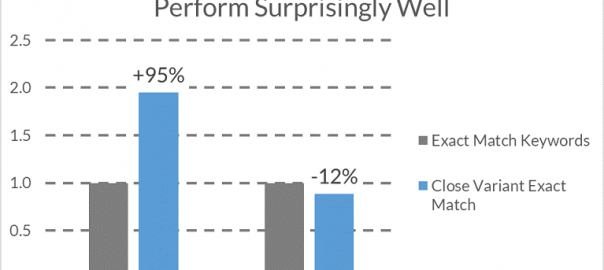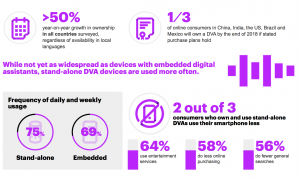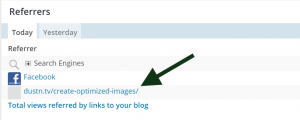— November 20, 2018
Last month, Google announced another major change to its keyword match types. Specifically, exact match keywords would begin to serve to search terms that are “close variants that share the same meaning of your keywords,” including synonyms, paraphrases, and results with the same implied intent. This change further diluted “exact match” keywords that began matching out to misspellings and grammatical variants in 2014 and queries with reordered words or with the addition or omission of “functional” words in early 2017.
![Google’s Change to Exact Match Was Big, But Was it Actually Bad? [Data] Google’s Change to Exact Match Was Big, But Was it Actually Bad? [Data]](https://www.onlinesalesguidetip.com/wp-content/uploads/2018/11/01-Googles-Change-to-Exact-Match-Was-Big-But-Was-it-Actually-Bad-Data.jpg)
Google rolled these changes out to advertisers throughout October, and many were not happy with losing control over their search keywords. And who can blame them, really? When diligent SEMs routinely monitor their search term reports, it’s certainly discouraging to see things like your exact match keyword for [leather handbags] matching to a search for a “cheap purse” or vice versa:
![Google’s Change to Exact Match Was Big, But Was it Actually Bad? [Data] Google’s Change to Exact Match Was Big, But Was it Actually Bad? [Data]](https://www.onlinesalesguidetip.com/wp-content/uploads/2018/11/02-Googles-Change-to-Exact-Match-Was-Big-But-Was-it-Actually-Bad-Data.jpg)
I’ve been assured these are very different products.
Following the results of over 16,000 advertisers throughout the change, it looks as if advertisers were not wrong to be worried about the reach of their exact match keywords. The change affected all English keywords and all advertisers, with no chance to opt out. By comparing the relative frequency of these close-variant matched search terms from before and after this change, we can view to what extent.
![Google’s Change to Exact Match Was Big, But Was it Actually Bad? [Data] Google’s Change to Exact Match Was Big, But Was it Actually Bad? [Data]](https://www.onlinesalesguidetip.com/wp-content/uploads/2018/11/03-Googles-Change-to-Exact-Match-Was-Big-But-Was-it-Actually-Bad-Data.png)
It’s worth noting that before this change, close variant matches for exact match keywords were a relatively seldom occurrence, making up just less than 5% of all ad impressions from exact match keywords. In the dust of this change – we see a significant 37.3% rise in the reach of these close variant matches. That means that close-variant terms now make up 6.8% of the reach of these exact match keywords. That’s still a minority of ad impressions, but these new matches do pose some challenges as well.
What Does It All Mean?
How you interpret this data really depends on whether you’re a glass-half-full or glass-half-empty type of person.
The growth of these new close variant search terms has effects on the performance of our ads and on our budgets. More impressions of course mean more clicks and ultimately more costs as well; our study revealed that these close variants now are receiving 23.6% more clicks and costing advertisers 14.7% more than they had prior to the October update. Those sound like big numbers, but they’re big in relative terms.
![Google’s Change to Exact Match Was Big, But Was it Actually Bad? [Data] Google’s Change to Exact Match Was Big, But Was it Actually Bad? [Data]](https://www.onlinesalesguidetip.com/wp-content/uploads/2018/11/04-Googles-Change-to-Exact-Match-Was-Big-But-Was-it-Actually-Bad-Data.jpg)
If we look at the changes in absolute terms instead, the numbers aren’t quite so scary. These numbers are closer to what advertisers would see in their bottom line and are also more in line with Google’s original estimate that the change to exact match keywords would increase clicks to these keywords by 3%.
![Google’s Change to Exact Match Was Big, But Was it Actually Bad? [Data] Google’s Change to Exact Match Was Big, But Was it Actually Bad? [Data]](https://www.onlinesalesguidetip.com/wp-content/uploads/2018/11/05-Googles-Change-to-Exact-Match-Was-Big-But-Was-it-Actually-Bad-Data.jpg)
An Optimistic View
Obviously, advertisers were surprised to hear that their exact match keywords would be reaching out to even more not-exact search traffic and that sentence is enough to stoke anyone’s skepticism. These new search terms may have been a surprise to advertisers everywhere, but not all surprises are bad ones.
As it turns out these new search terms may have helped advertisers more than they hurt them. Injury lawyers may have not intended their ads to show for “Accident Attorney” searches, but it looks as if a lot of this additional traffic was good traffic for our advertisers. The additional reach of these close-variant exact match keywords performed appreciably better than the exact match traffic they were originally aiming to bring to their accounts – on average, this close variant traffic had almost double the CTR at a CPC that was 12% lower than its traditional exact match counterpart. In most cases, clients even saw these close variants have a higher conversion rate as well.
![Google’s Change to Exact Match Was Big, But Was it Actually Bad? [Data] Google’s Change to Exact Match Was Big, But Was it Actually Bad? [Data]](https://www.onlinesalesguidetip.com/wp-content/uploads/2018/11/06-Googles-Change-to-Exact-Match-Was-Big-But-Was-it-Actually-Bad-Data.png)
While these early performance numbers may bring relief to many advertisers, it’s important to understand that these averages may differ from what you see in your own account! As 15% of the searches that occur today have never been searched for before, now more than ever your keywords may be showing to new traffic that might not be the best for your business.
Bottom line: Keep an eye on your search term reports as they will be increasingly providing important insight into new keywords and negatives keywords for your campaigns!
Let us know what you’re seeing in your own account. Has the change helped or hurt you?
Data sources
The aggregated data in this post is based on a sample of 16,952 WordStream client accounts advertising on Google Search Network between September 24 and October 31, 2018 using exact match keywords. Clients represent all verticals and predominately US and English speaking markets.
Digital & Social Articles on Business 2 Community
(78)






